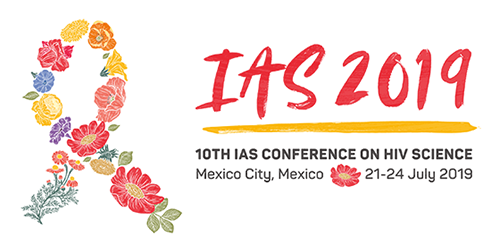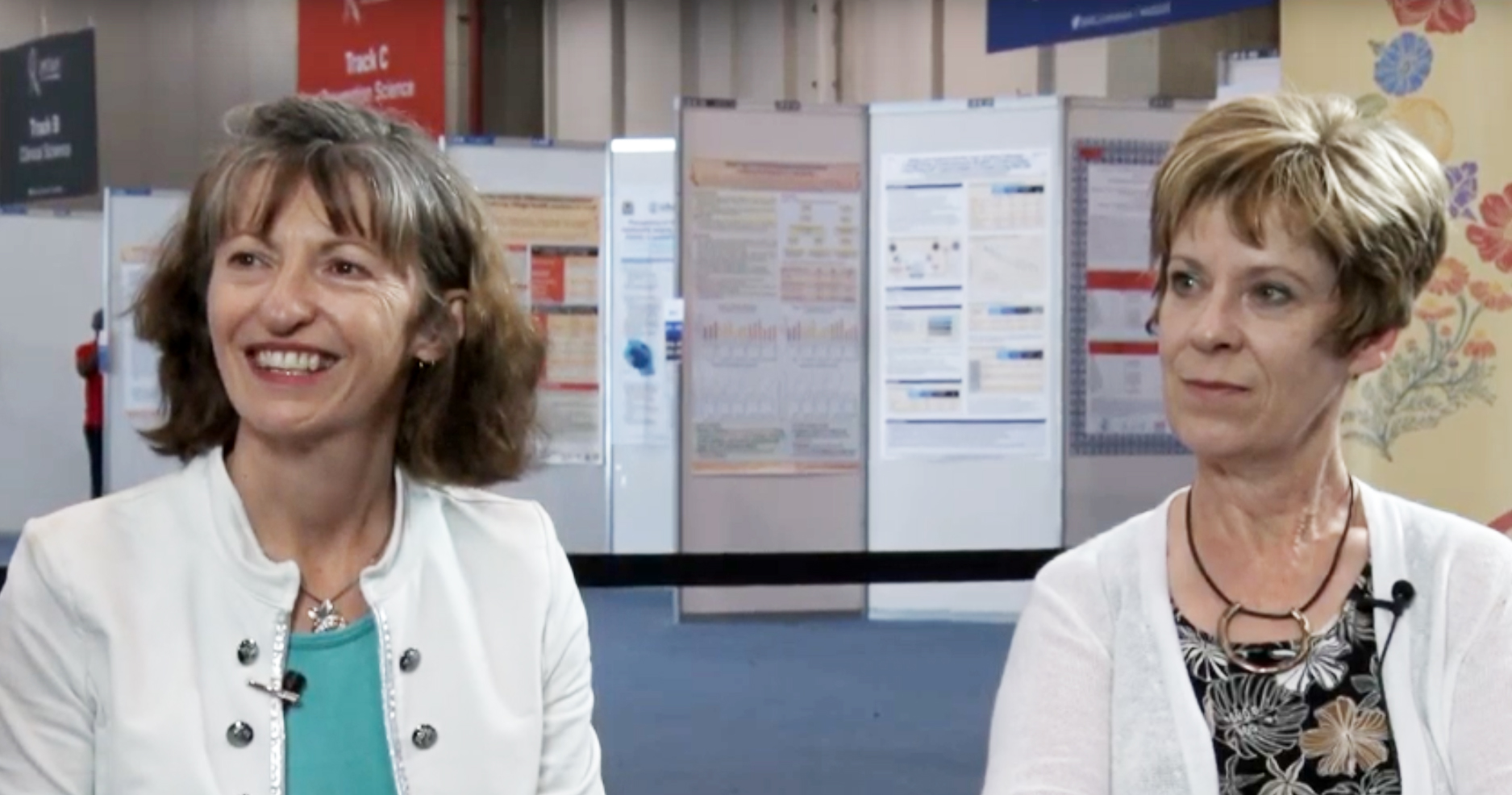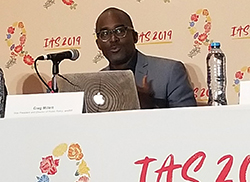
amfAR grantees and staff figure prominently
 Dr. Johnston (left) and Dr. CannonamfAR-funded researchers presented on a wide variety of cure research studies and strategies at the International AIDS Society Conference on HIV Science in Mexico City in July. For example, Dr. Paula Cannon of the University of Southern California gave a plenary talk on stem cell and genome editing, techniques that could play an important role in the development of a cure. Dr. Cannon also participated with Dr. Rowena Johnston, amfAR VP and director of research, in a televised interview discussing the latest in HIV cure research with Phill Wilson, an amfAR trustee and the founder of the Black AIDS Institute.
Dr. Johnston (left) and Dr. CannonamfAR-funded researchers presented on a wide variety of cure research studies and strategies at the International AIDS Society Conference on HIV Science in Mexico City in July. For example, Dr. Paula Cannon of the University of Southern California gave a plenary talk on stem cell and genome editing, techniques that could play an important role in the development of a cure. Dr. Cannon also participated with Dr. Rowena Johnston, amfAR VP and director of research, in a televised interview discussing the latest in HIV cure research with Phill Wilson, an amfAR trustee and the founder of the Black AIDS Institute.
At a symposium co-chaired by Drs. Sharon Lewin of the University of Melbourne, Australia, and Eileen Scully of Johns Hopkins University, Dr. Annemarie Wensing of the University Medical Center Utrecht spoke on HIV cure by stem cell transplantation. Dr. Wensing is co-principal investigator of amfAR’s IciStem research consortium, which recently reported the case of the “London patient,” who shows no signs of HIV after a stem cell transplant.
Dr. Jonathan Karn of Case Western Reserve University presented research demonstrating that postmenopausal women’s HIV reservoirs are more like men’s in their ability to be reactivated out of latency. His earlier work had shown that premenopausal women’s reservoirs are harder to reactivate than men’s, and that this difference is due to estrogen.
A report released during the conference shows that in 2018, amfAR was the second-largest funder of HIV cure research in the world behind the National Institutes of Health. The report—compiled by the Cure Resource Tracking Group, a collaboration between AVAC and the International AIDS Society—estimates total global investments in HIV cure research of $323.9 million in 2018.
Another report released during the conference by UNAIDS shows that progress in lowering the rate of new HIV infections among children and expanding access to treatment for children, adolescents, and pregnant women living with HIV has slowed significantly. Two more reports released at the same time show that global gains in addressing the HIV/AIDS crisis overall have slowed and that donor funding has flattened. UNAIDS calls for urgent action to reverse these trends.
amfAR staff participated prominently in the conference:
Greg Millett, vice president and director of public policy, spoke at a press conference on “Translating Progress Into Success to End the AIDS Epidemic.” The press conference served to launch a report with the same name, coauthored by amfAR, AVAC, and Friends of the Global Fight Against AIDS, Tuberculosis and Malaria. The report demonstrate how dramatic reductions in HIV incidence and mortality have been accomplished in six very different settings around the world.
|

|

© International AIDS Society/Steve Forrest/Workers' Photos |
Dr. Annette Sohn, vice president and director of amfAR’s TREAT Asia program, co-chaired a special session with former IAS president Dr. Chris Beyrer of Johns Hopkins University, called “Data leading the way: Designing responses based on the numbers.” She was also a session co-chair at the 11th International Workshop on HIV Pediatrics, which took place immediately before IAS 2019.
|
Giten Khwairakpam, TREAT Asia's project manager for community and policy, co-chaired the 5th International HIV/Viral Hepatitis Co-Infection preconference. The meeting focused on access to hepatitis care for people living with HIV and other vulnerable populations with overlapping risks for both HIV and hepatitis, such as people who inject drugs.
|
 |
Other findings reported at the conference include:
- Sexually transmitted infections and reproductive health. Building on the recently completed ECHO study showing extremely high rates of HIV and other sexually transmitted infections (STIs) among young women in sub-Saharan Africa, new data revealed more detailed information about vulnerability to HIV and STIs in women and girls.
- Dolutegravir and birth defects. Recent studies have shown lower risk of neural tube defects than was previously reported in babies born to women taking the integrase inhibitor dolutegravir. Findings from the stand helped inform updated WHO guidance on antiretroviral treatment including dolutegravir.
- Improving and simplifying treatment. In three trials (GEMINI 1 and 2 and TANGO), the two-drug regimen of dolutegravir and lamivudine (3TC) has been shown to be as effective as the three-drug combination of dolutegravir, tenofovir, and emtricitabine, both among treatment-naïve patients and among patients switching regimens after achieving viral suppression.
- Vaccine research. Ongoing vaccine trials, including a new phase III vaccine efficacy trial, Mosaico, are renewing hope for the development of an effective HIV vaccine. amfAR grantee Dr. Dan Barouch of Harvard Medical School was among the scientists at the conference presenting research on “mosaic” vaccines, which incorporate genetic material from different strains of HIV found around the world.
- Making prevention easier. Encouraging prevention studies are under way, including the first human trial of an implant designed to provide HIV pre-exposure prophylaxis (PrEP) for a full year.